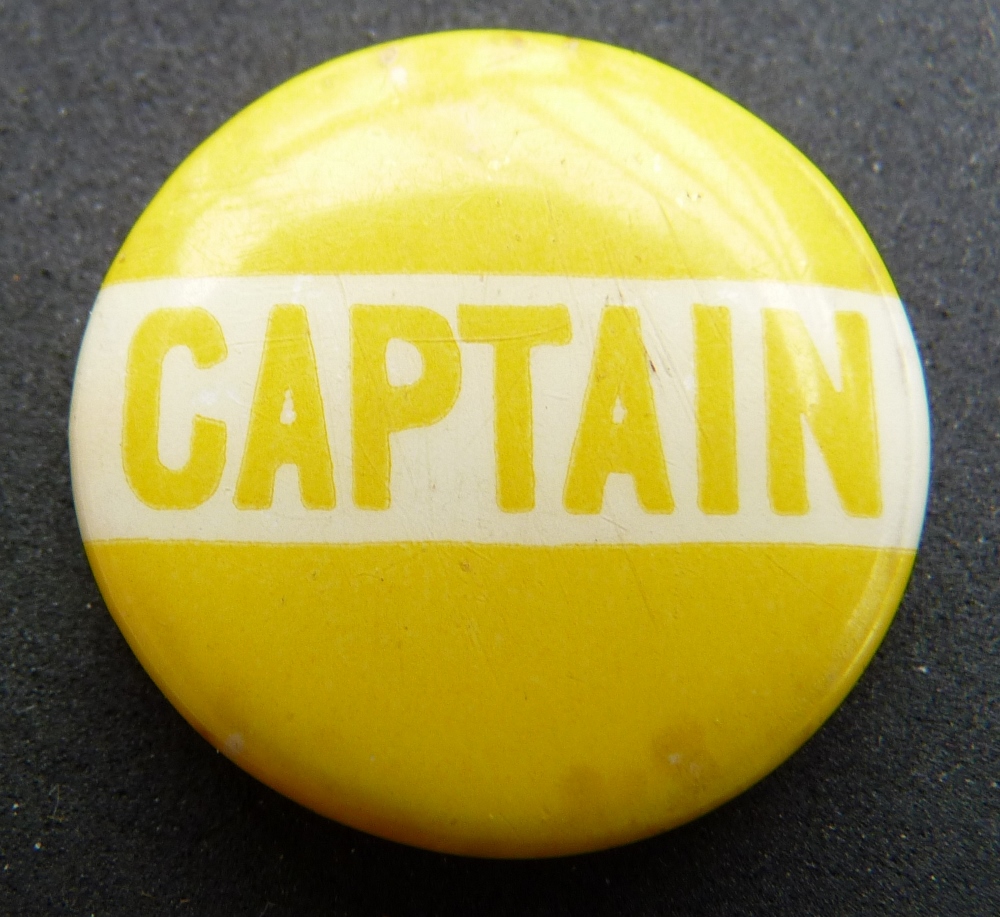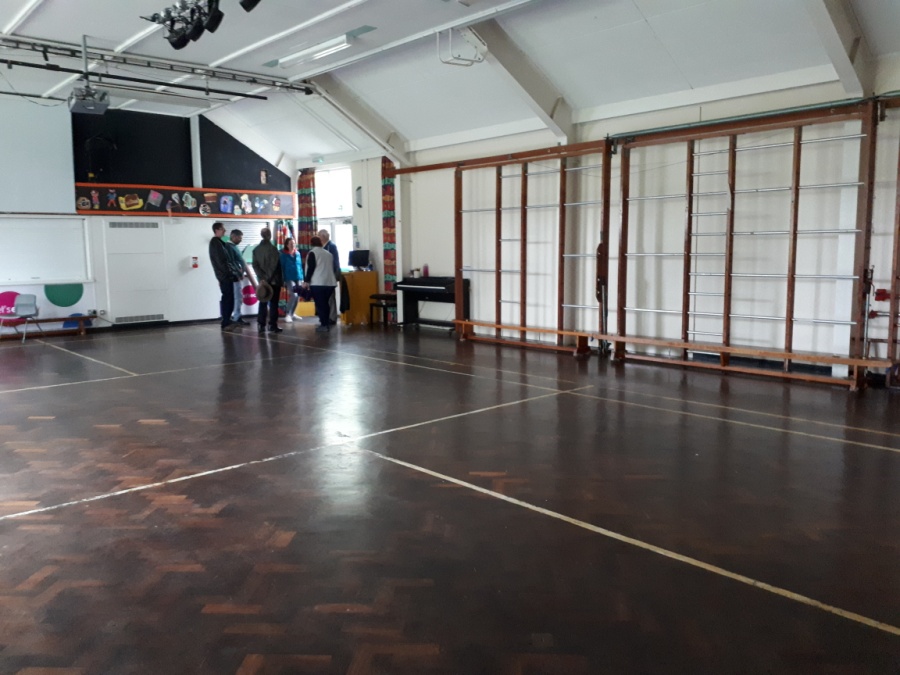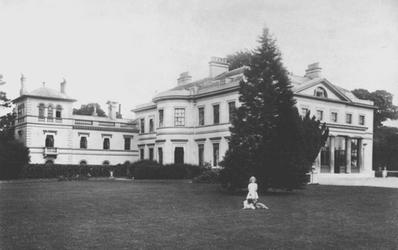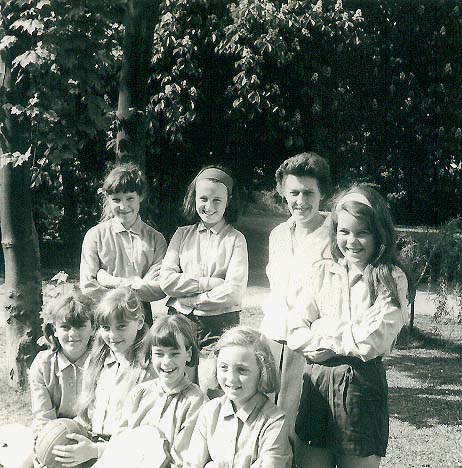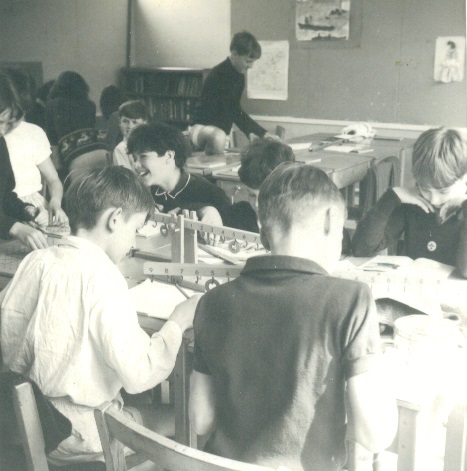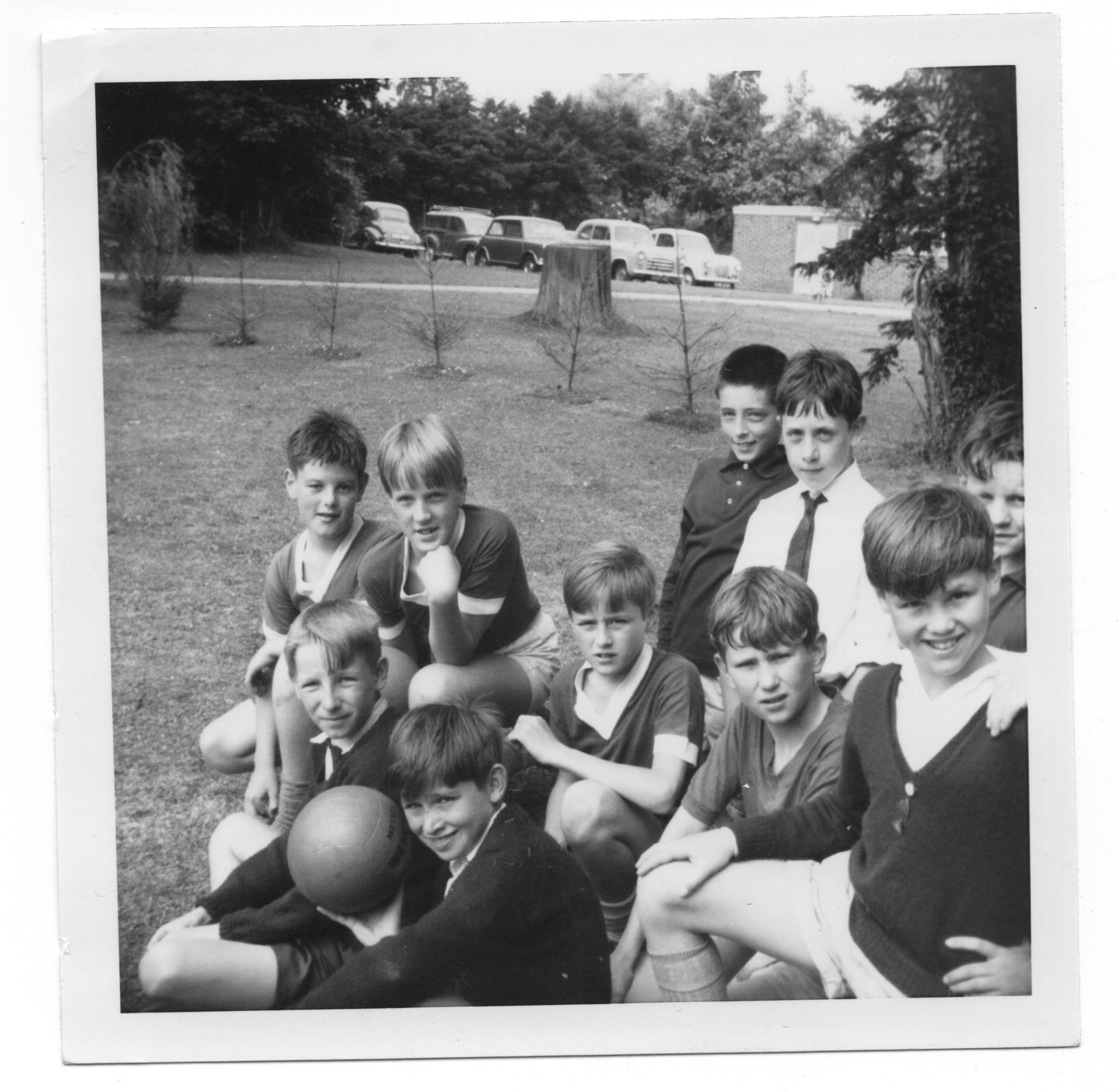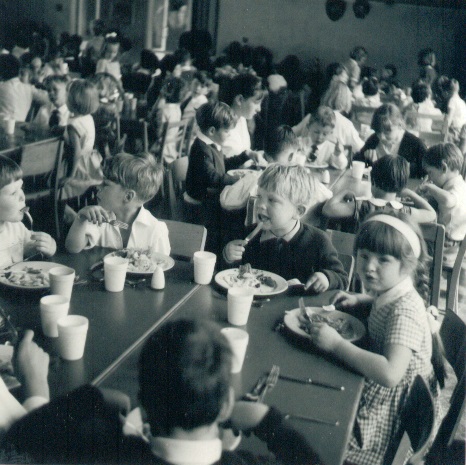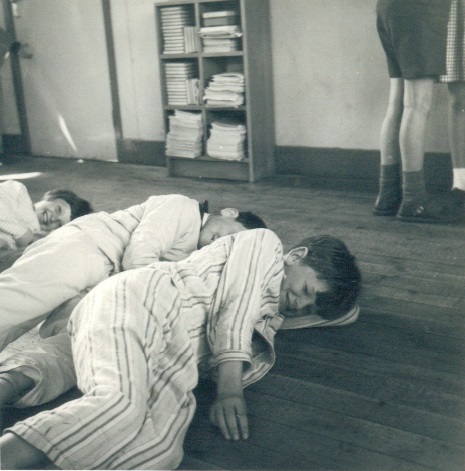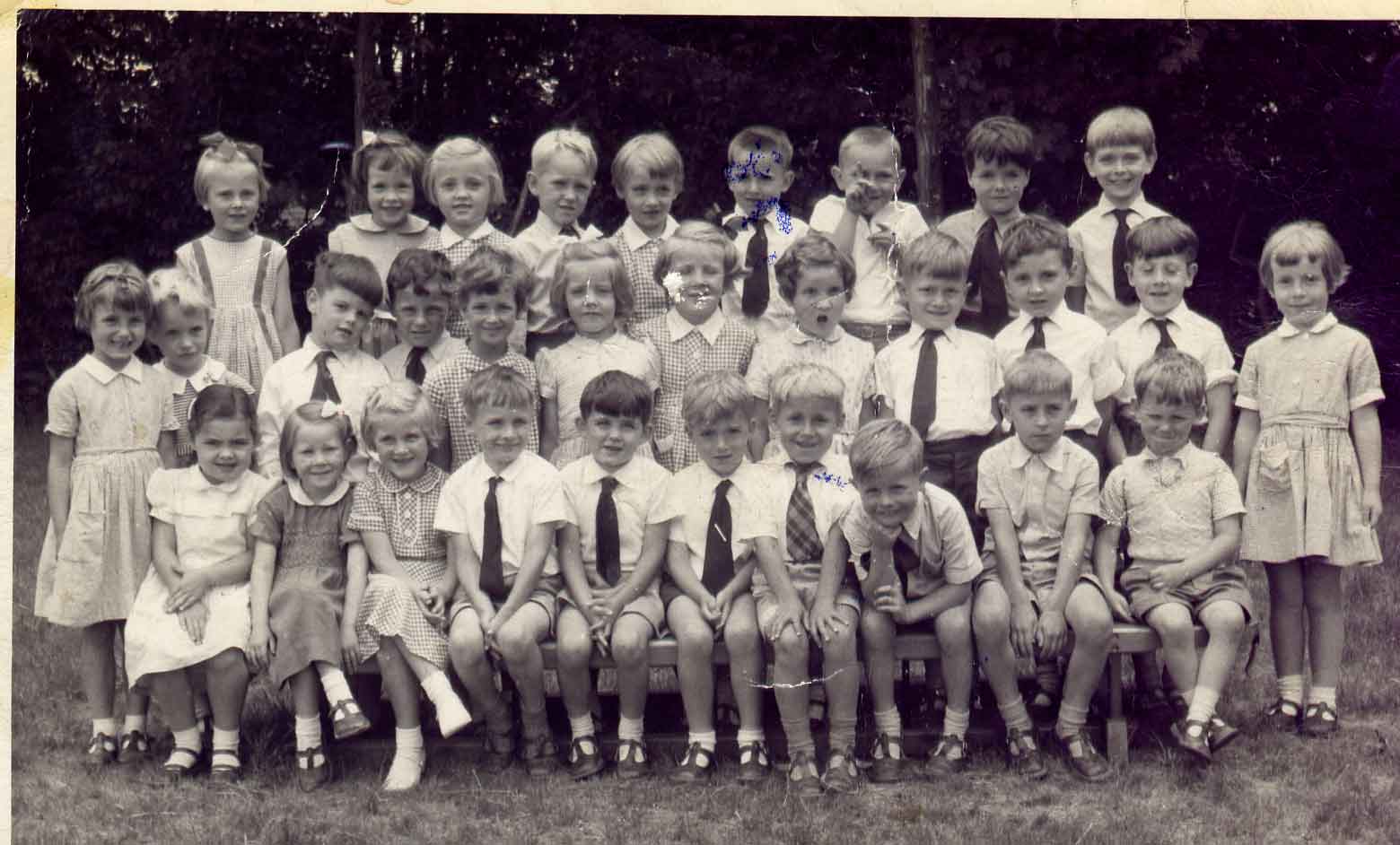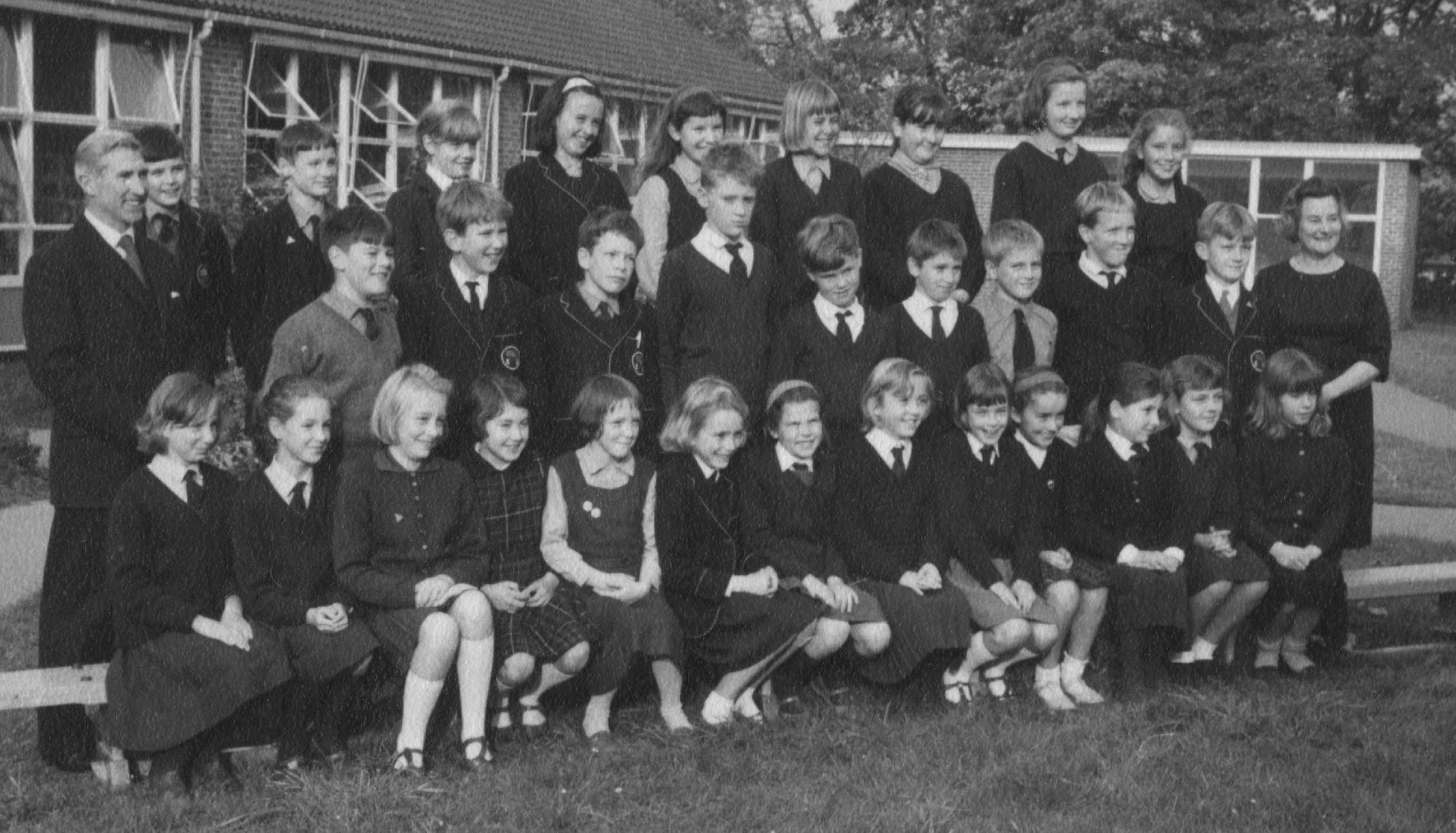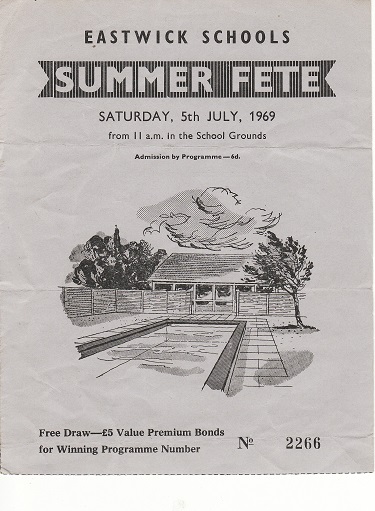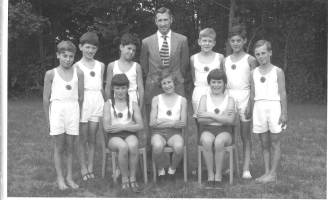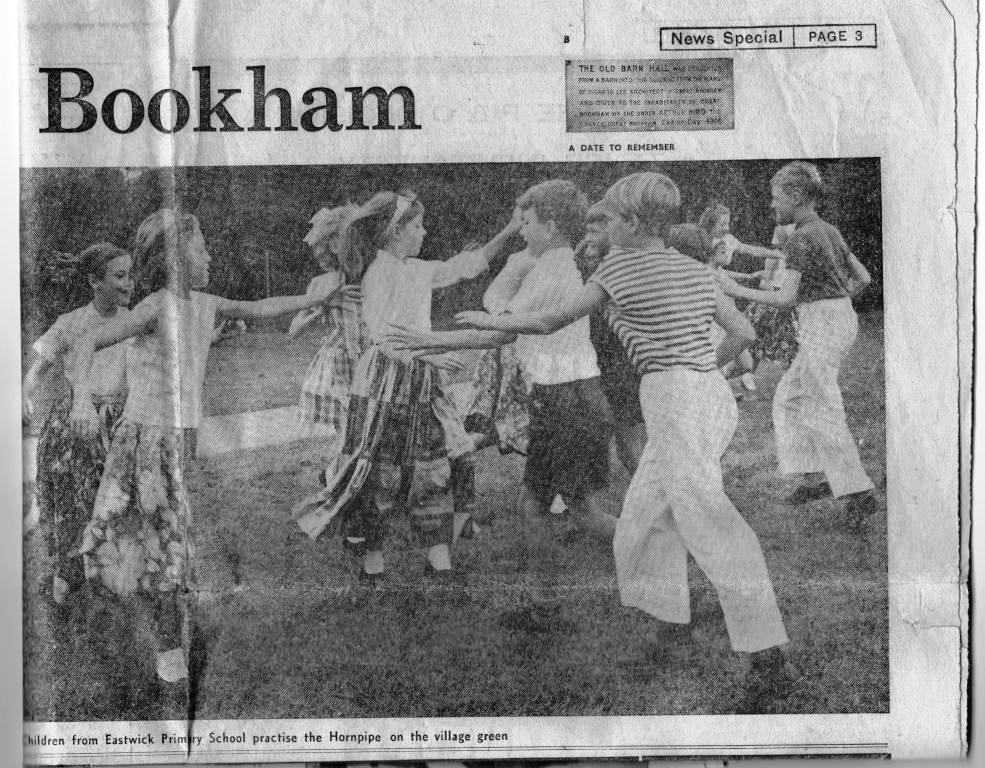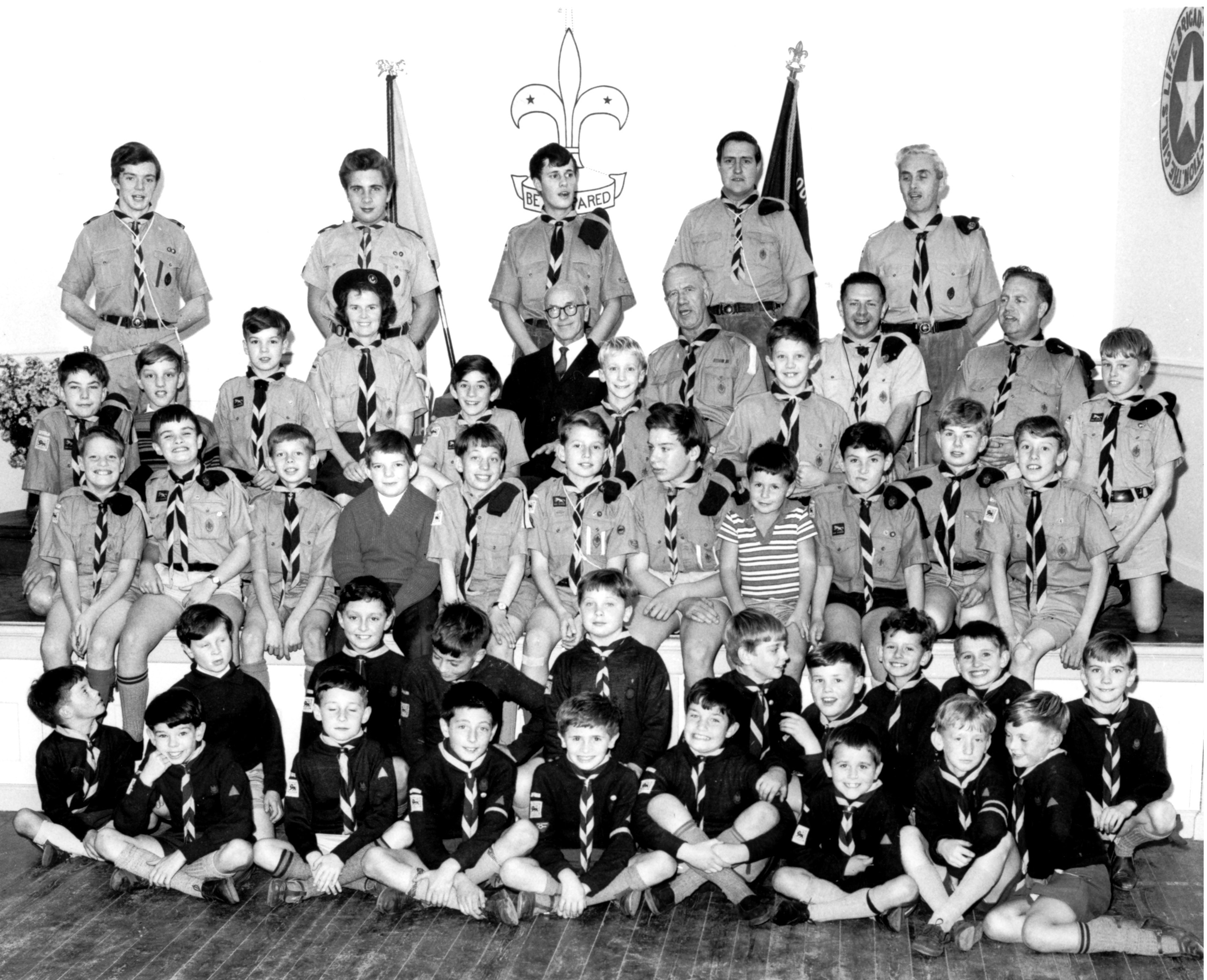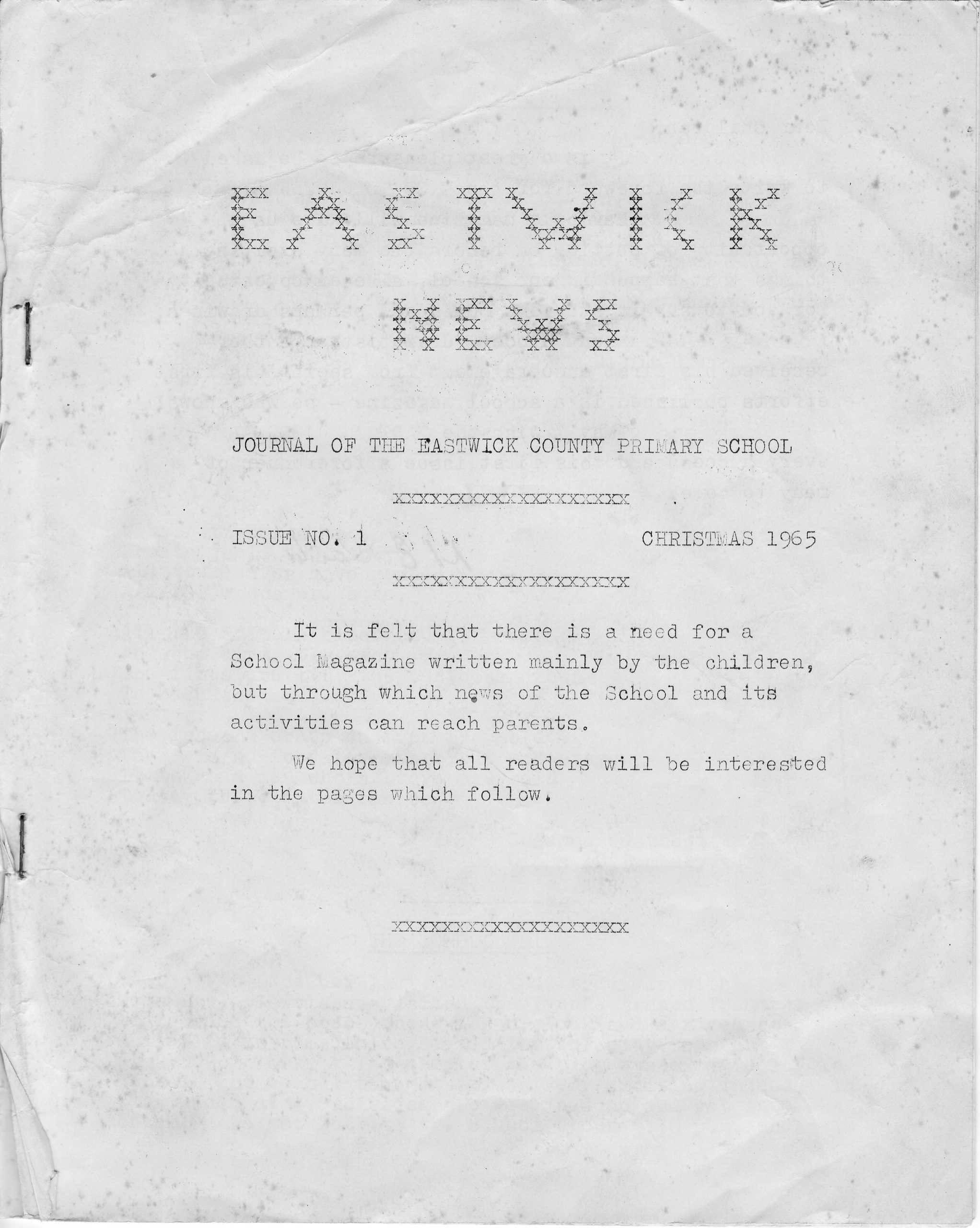Playground rhymes.
For anyone brought up in an English-speaking playground, the books of Iona and Peter Opie are not to be missed. Their subject is the world of children’s play – songs, games and rhymes found in street and playground, passed from child to child, a lost world, half remembered, mostly forgotten, and hardly noticed by much too busy and serious adults. The success of their first book – “The Lore and Language of Schoolchildren” (1959) – or perhaps just the pleasure of watching children play – set the Opies off on a lifetime’s career of observing, collecting and writing about children’s play.
I asked my eight-year-old daughter[1] what she and her friends sang or played together at school in the playground, but this was evidently not a sufficiently sensible or interesting question. “Games”, she said, “You know…” It was not until I gave her an example – from the Opie’s book “The Singing Game” – that she came up with the following:
My boyfriend gave me an apple
My boyfriend gave me a pear
My boyfriend gave me a kiss on the lips
And threw me down the stairs
I gave him back his apple
I gave him back his pear
I gave him back his kiss on the lips
And threw him down the stairs
I threw him over China
I threw him over Spain
I threw him over Australia
And never saw him again.
This is a song or chant for a clapping game. The girls (these singing games are mostly performed by girls) stand face to face and clap against each other’s and their own hands in a set pattern in time with the beat of the song – as my daughter demonstrated as best she could, having only an inexpert adult – myself – to clap with.
The song is part of what the Opies record as “I am a pretty Dutch Girl“, which, they say, seems to have arrived in Britain in about 1959 from America and then “spread through the country like wildfire”. Clapping games themselves are much older, with records from Britain and the United States over the last one hundred years and more, but they apparently enjoyed a revival in Britain in the 1960’s as this and other American songs arrived.
Another `song’ my daughter chanted was this :
I had a little brother
His name was Tiny Tim
I put him in the bath tub
To see if he could swim
He drank up all the water
He ate up all the soap
He tried to eat the bath tub
But it wouldn’t go down his throat
In came the Doctor, in came the Nurse
In came the lady with the alligator purse
`Measles’ said the Doctor, `Mumps’ said the Nurse
`Pizza’ said the lady with the alligator purse
Out went the Doctor, out went the Nurse
Out went the lady with the alligator purse.
The first eight lines are identified by the Opies as coming from an early twentieth century bawdy song and the remainder as a game-song of American children from at least the 1920s. There, however, they sang of “a big black purse”. Wherever it came from, the “alligator purse” is a fine improvement in rhythm, even if the meaning remains utterly mysterious. Meanwhile, Steve Roud, another excellent student of children’s games[2], provides a version of these last lines collected in London in 1907, only there, its not a lady that comes in, but the devil !
The only other clapping song my daughter came up with is recorded by the Opies under “Less Popular Clapping Songs” without comment (and without the curious first four lines):
In Bombay, in the land of Alaska,
Far away, in Bombay
Uncle Duffy is puffing his pipe
Puff puff, puff puff
All the girls in Spain
Wash their knickers in champagne
And the boys in France
Do the belly wobble dance
And the dance they do
Is enough to tie a shoe
And the shoe they tie
Is enough to tell a lie
And the lie they tell
Is enough to ring a bell
And the bell they ring
Goes : Dingalingaling!
Perhaps, like others, this had a bawdy origin somewhere, or maybe its just the result of childish wit and delight in language.
Another of my daughter’s rhymes ran :
I went to a Chinese restaurant
To buy a loaf of bread
I gave the man a five-pound note
And this is what he said:
“My – name – is
Hong Kong fuey
Diddle-aye-do-ee
Ice cream cornet
Fish and chips.”
Alternatively, the last four lines can go:
Elvis Presley
Girls are sexy
Sitting in the back seat
Drinking Pepsi
Having a baby
Calling it daisy
Come and join the fun fun fun!
These lines are obviously no older than the 1960’s and may be American. The first four lines – concerning a Chinese restaurant (or laundry) – are reported by the Opies from the 1950s, when they were often used as an introduction to a counting-out rhyme – that is, for de-selecting from a group until the last person becomes `it’ or `he’ or ‘on’, in a chasing game for example. In that guise the rhyme continued with whatever was the local and current form of “Chinese counting” – something along the lines of:
Eeny meeny macka racka
Ooray dominacker
Dominacker chikaracker
Om pom push!
I ‘invented’ that one. There are hundreds like it, more or less similar, and that is my half-remembered and approximate version of what we chanted many years ago. I have the feeling that there was a “lollipopper” in there somewhere too[3]. A female friend who was at primary school in Middlesex in the early to mid nineteen-sixties remembered it without a moment’s hesitation, and with the lollipopper too:
Eeny meeny macka racka
Rare-rye dominacker
Chickenpokker lollippopper
Om pom push!
Another (male) friend, who was at primary school in southern Hampshire in the early nineteen seventies, also knew it – but not to recite, because it had been strictly a girl’s rhyme, which they used in skipping games. So too my male, eighty year-old neighbour who was brought up in Woolston (Southampton) in the 1930s/early 1940s, who only knew it by repute and not to recite : “it was a girl’s game”.
My daughter had never heard of anything like it. She had heard of “Eeny meeny miney mo”, but she didn’t know how it went after that – which is, perhaps, an indication of some success in efforts to change old attitudes – as is the fact that among those who do know it the offending word has now been replaced by ‘tiger’, ‘tigger’ or similar.
In “Children’s Games in Street and Playground” (1969) the Opies conclude that while the Eeny meeny macka racka ‘gibberish’ rhyme itself is of no great antiquity (they found no records of it before the 1920s), its origins and those of similar rhymes – especially those beginning Inty minti, Eenty teenty or Zeenty teenty instead – are old – possibly very old. The connection has been made between at least some of these rhymes and the “Shepherd’s Score”, a traditional way of counting sheep, fish, stitches, and so on, in a number of counties in the north of England. The Opies found children in Keswick (in Cumbria) still using this method in their counting out. The Shepherd’s Score in turn has been traced, speculatively, to medieval welsh drovers; to still more ancient Celts driven to the hills by invading Anglo-Saxons; or, as the Opies prefer, to the ancient British tongue of Cumbria.
This seems an ambitious claim at first glance, until you get to numbers three and four in the Shepherd’s Score. Here is the beginning of a counting-out rhyme from Edinburgh (for some reason Scotland seems to be particularly rich in this form of the rhyme) : Inty, tinty, tethery, methery [4]. Here are the first four numbers of the traditional counting system used by the children from Keswick : Yan, Tan, Tethera, Methera – which is identical to the Shepherd’s Score reported, for example, from the Derbyshire Dales, and very similar to those from elsewhere [5]. The similarity of these otherwise peculiar and unfamiliar words is striking. And there are more. The earliest of this family of rhymes found by the Opies is this from 1820 :
Zinty, tinti
Tethera, methera
Bumfa, litera
Hover, dover
Dicket, dicket
. . . [6]
The Shepherd’s Score, meanwhile, includes bunfit/bumfit (15), lethera (7), hothera (8), dovera (9) and dick/dik (10)[7]. Also noteworthy is that both the Shepherd’s Score and the gibberish rhyme words for five are usually something starting with a plosive ‘p’, such as pimp or pump or push. As the Opies note, the Shepherd’s Score seems to be the ‘starting point, or inspiration, or source of occasional words’ of various versions of the children’s rhyme. However, while a connection between the Shepherd’s Score and some versions of counting- out rhymes does not seem to have been entirely dismissed, the idea that the Score itself is of a great vintage is no longer respectable. Steve Roud summarises the scholarly situation thus :
‘Unfortunately . . . there is no evidence to support the assumption that the ‘shepherd’s score’ is of great age. The earliest mention of it in Britain is about 1745. In fact, in the opinion of many post-war experts, internal linguistic evidence, such as these numeral’s affinity with modern rather than old Welsh, demonstrates that they were introduced into the areas they were found a great deal later than the period of Anglo-Saxon settlement.’ [8]
In other words (I think), the Score probably arrived with modern Welsh speakers moving into England during the 18th Century.
Roud’s scepticism, meanwhile, is well trumped by Michael Barry[9]. In frustration at the unknowability of the origins of the Shepherd’s Score, he very nearly argues that it was only after folklorists started collecting and disseminating versions of the Score that they began to be known, but only ever second-hand and by repute. That is, no one is ever found who actually uses such a Score – for counting sheep, stitches, fish, or whatever ![10]
Roud’s summary of the scholarly situation is disappointing of course. However, while I am not qualified to comment on the linguistic evidence, I am not convinced that the lack of mention before 1745 is a clincher. A great deal of folk culture was not recorded before 1745. In fact most of what we know was not written down until the nineteenth century when collecting folklore and customs became fashionable.
Similarly, Roud also seems to suggest that counting-out rhymes are not so old either, on the grounds that the earliest recorded example is from 1759 (or possibly 1611 in France)[11]. On the one hand, the fact that childhood was, for most, a very different experience before formal education arrived – lots of work and no ‘rithmatic – could support Roud’s suggestion. But on the other, to suggest that children neither played together nor knew how to count even to five before the eighteenth century seems unlikely. It seems to me much more likely that we simply have no records.
But to return to the ‘gibberish rhyme’, these examples are from an on-line exchange on Mudcat.org :[12]
From Salford in the 1930s, where my mum lived as a girl, and passed on to me.
Eeny meeny mackeracka
Rare eye dummeracka
Chickeracka rare eye
Om pom push
My great uncle Albert who lived from 1902-1979 used to tell me
Eeni meeni mackeraca er rye dominacka chicka packa lullapacka rum pum push
From my nan born in 1920s west London
Eeny meeny mackaracka
Rare rye dominacka
Chickalacka lollipoppa
Om Pom push
These examples support the Opie’s report that they could not find examples of the ‘gibberish rhyme’ before the 1920s. However, it depends what you’re looking for. They specifically say that ‘Eenie, meenie, macca, racka’ was not known to Bolton, the author of one of the first collections of children’s counting-out rhymes, in 1888. But the following was known to Bolton :
Eenie, Meenie, Tipsy, toe;
Olla bolla Domino,
Okka, Pokka dominocha,
Hy! Pon! Tush![13]
It is clearly the `same’ rhyme, even though it lacks the macka racka. So the ‘gibberish’ is at least as old as the 1880s.[14]
Eeny meeny miny moe.
Historically speaking, the most well-known version of the eeny meeny family of rhymes is probably :
Eeny meeny miny moe
Catch a n—– by his toe
If he hollers let him go
Eeny meeny miney moe
As noted earlier, the offensive word has been replaced over time by tiger or tigger, or some-such. This seems to have happened during the 50s in the States and in the 70s in the UK, presumably reflecting the advance of awareness of racism in each country. Meanwhile, the rhyme is first reported from the late 19th Century, by Bolton again, who suggested that it probably originated in America. [15] The Opies agree, given the vocabulary.
There is also a theory that the original origin of “Eeny meeny miny moe” and possibly of the mention of a black person too, is from the Portugese/West African Creole language of the islands of São Tomé and Principe, which lie off the West coast of equatorial Africa. The language is known as São Tomense. [16] Derek Bickerton notes the following: in São Tomense, ine is used to turn the next word into a plural; the next word (of the rhyme) is mina, which means child – therefore, children. Meanwhile, mana means sister and mu means my. In other words, ine mina mana mu is São Tomense for my sister’s children ! Bickerton also notes, in support of the theory, that we have a children’s rhyme on the one hand and a reference to children on the other; a reference to a black person in the rhyme and a language spoken by black people – presumably including at least some black slaves in 18th or early 19th Century America. He then suggests that, somewhere in the US, children already familiar with Score-derived counting-out rhymes heard the São Tomense expression, noticed the resemblance and proceeded to incorporate the new words into a counting-out rhyme. He also confesses that he has no evidence to back this history up, but concludes that an Afro-Creole source for eeeny meeny miney mo `would seem to be at least as convincing as a Celtic one.’
Or possibly not. The only other writer I can find picking up on this theory is the Carribbean poet, novelist, and local creole language advocate, Frank Martinus Arion. Arion is from the Dutch Antilles, and his topic is a creole known as Guene. Having repeated Bickerton’s analysis of the São Tomense expression (without acknowledgement), and noting that a creole word maina means to quiet down, he concludes that the real meaning of the eeny meeny rhyme is in fact : “Children quiet down/You have to go to bed now/It is finished. Look at this whip” ! This would have been used by a – probably black – nanny to the children in her charge. [17]
And that is not all. Arion is a Dutch speaker. According to a Dutch contributor to the Mudcat.org thread mentioned above, he also discusses the well know Dutch version of the eeny meeny rhyme, also used for counting-out.[18] It goes like this :
Iene miene mutte [ Eena meena mutte
Tien pond grutten Ten pounds of groats
Tien pond kaas Ten pounds of cheese
Iene miene mutte Eena meena mutte
Is de baas Is the boss]
Arion then reports a creole – probably São Tomense – song, sung by black slaves, which goes (or went) like this :
Iene miene muito
Tempo de n’grutta
Tempo de n’kasala
Iene miene muito
Es de baixe.
Arion’s analysis of this rhyme goes like this: Iene is a pluralizer; miene is from the Portuguese word for girl, menina; muito is the Portuguese word for much/ many; tempo means time; n’grutta means to make love; kasala comes from the Portuguese casar se, to marry; baixa is the Portuguese word for down or below. So the translation of the song into English would be :
Many girls.
Time to make love
Time to marry
Many girls
Down there below.
Male slaves were put on the upper decks, the women below on the lower decks.
One has to note that as an advocate for the contribution of West African-origin creoles to Western culture, Arion’s arguments may be somewhat motivated.
Nonetheless, it’s a great story.
Eeny meeny . . .
It is time now to return to basics, that is, to eeny and meeny. Whatever contribution Shepherd’s Scores or West African slaves may or may not have made to the eeny meeny family of rhymes, it is noteworthy that a great many of the rhymes begin with these two words, or versions thereof. And It is also the case that these rhymes are usually used by children for counting-out. As we have seen from the Dutch example above, the rhyme is not confined to English speakers, and similar beginnings are to be found in German (including by Bolton), Danish, Norwegian and elsewhere[19].
It is clear enough that eeny is simply a version of one – een in Dutch, ein in German, aan in old English, eena in a Shepherd’s Score from North Yorkshire[20], oan in Scottish Gaelic, un in Welsh. The addition of the y, that is, the ee sound, would then be just a bit of fun, playing with sounds, as in the more obvious onery, twoery way of counting (which was the most common way in Bolton’s day). Meeny would then be simply a fun rhyme to follow. But we can go on : miney and mo alliterate with meeny; similarly, the n occupies the same position and internally alliterates in eeny, meeny and miney ; the vowels go ee i o, which form a natural series produced from the front to the back of the mouth (as in fee, fi, fo fum, or ee eye o). David Rubin and colleagues point out these and other structural-linguistic features to explain how children manage to remember these rhymes.[21] My point is that they also help to explain why they are so popular and persistent. The fact is, they are fun !
It seems reasonable to conclude that the eeny meeny family of rhymes may have multiple sources. It certainly has multiple traditions and perhaps multiple occasions of semi-independent invention, when the need for a means of counting-out was (and is) required. Above all, it is the result of generations of children in countless playgrounds delighting in playing with the musicality of language – and with nonsense.
*
While counting-out rhymes are common to both boys and girls, clapping games and their songs, as mentioned above, are generally girls’ games. Perhaps that’s why I recognised none of the songs in the Opie’s singing games book, and none of my daughter’s. One game we used to play, however, was for the boys only – the utterly serious game of flick cards . . .
-
This was in 1994. She had attended Ridgemead Primary School, Bishops Waltham, in Hampshire, England. ↑
-
Roud, Steve The Lore of the Playground: One hundred years of children’s games, rhymes and traditions, Random House, London, 2010, p169 ↑
-
I was at Eastwick Primary School, Great Bookham, Surrey, England, from 1960 to 1966. ↑
-
http://www.electricscotland.com/kids/bairns/page2.htm ↑
-
https://en.wikipedia.org/wiki/Yan_tan_tethera ↑
-
‘The Chatterings of the Pica’, Charles Taylor,1820, described as being old. ↑
-
http://stancarey.wordpress.com/2013/11/27/yan-tan-tethera-pethera-pimp-an-old-system-for-counting-sheep/ ↑
-
Roud, Steve The Lore of the Playground: One hundred years of children’s games, rhymes and traditions, Random House, London, 2010, p354. NOTE : I began this piece recommending the Opies’ work. I would now also recommend Steve Roud’s book, which is much shorter and covers everything you need to know. ↑
-
Traditional Enumeration in the North Country, Michael Barry, Folk Life, Volume 7, Issue 1 (01 January 1969), pp. 75-91 ↑
-
See also : Major and Minor Chronotopes in a Specialized Counting System, Donald N Anderson, Journal of Linguistic Anthropology, Vol. 21, Issue 1, pp. 124–141, ISSN 1055-1360, EISSN 1548-1395. © 2011 by the American Anthropological Association. https://www.academia.edu/948046/Major_and_Minor_Chronotopes_in_a_Specialized_Counting_System ↑
-
Roud, ibid ↑
-
Bolton, Henry Carrington, The Counting-out Rhymes of Children: Their Antiquity, Origin, and Wide Distribution. New York: D. Appleton & Co. (1888). ↑
-
Incidentally, as I recall, we used parts of the rhyme as a rousing chant in Cubs/Scouts in the 1960s – led by adults – much in the manner of the contemporary All Blacks’ Maori-style chant:
Dominakka chikkarakka, Dominakka chikkarakka, Dominakka chikkarakkaOm pom push ! ↑
-
An Afro-Creole Origin for Eena meena Mina Mo, Derek Bikerton, American Speech, Vol. 57, No. 3 (Autumn 1982), Duke University Press. www.jstor.org/stable/454870; p227 ↑
-
The value of Guene for folklore and literary culture, Frank Martinus Arion, in A History of Literature in the Caribbean: English- and Dutch-speaking countries, Albert James Arnold, Julio Rodríguez-Luis, J. Michael Dash, John Benjamins Publishing, Jan 1, 2001, p 415-419 ↑
-
My research became complicated here. The Mudcat.org contributor gives no reference other than to say she found the information on Wikipedia. I have been unable to do so, even in the Dutch version. Meanwhile it is possible that the material is to be found in the Arion paper referenced immediately above. However, I do not have access to the complete paper to confirm this. ↑
-
Opies 1969 ↑
-
http://www.yorkshiredialect.com/celtlang.htm ↑
-
Children’s memory for counting-out rhymes: A cross-language comparison, David C Rubin, Violeta Ciobanu, William Langston, Psychonomic Bulletin and Review 1997, 4(3). 421-424 ↑
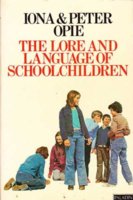
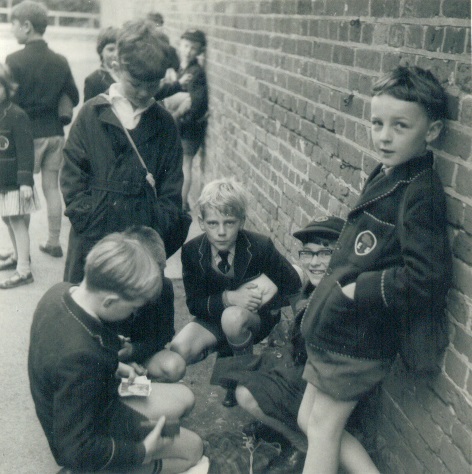
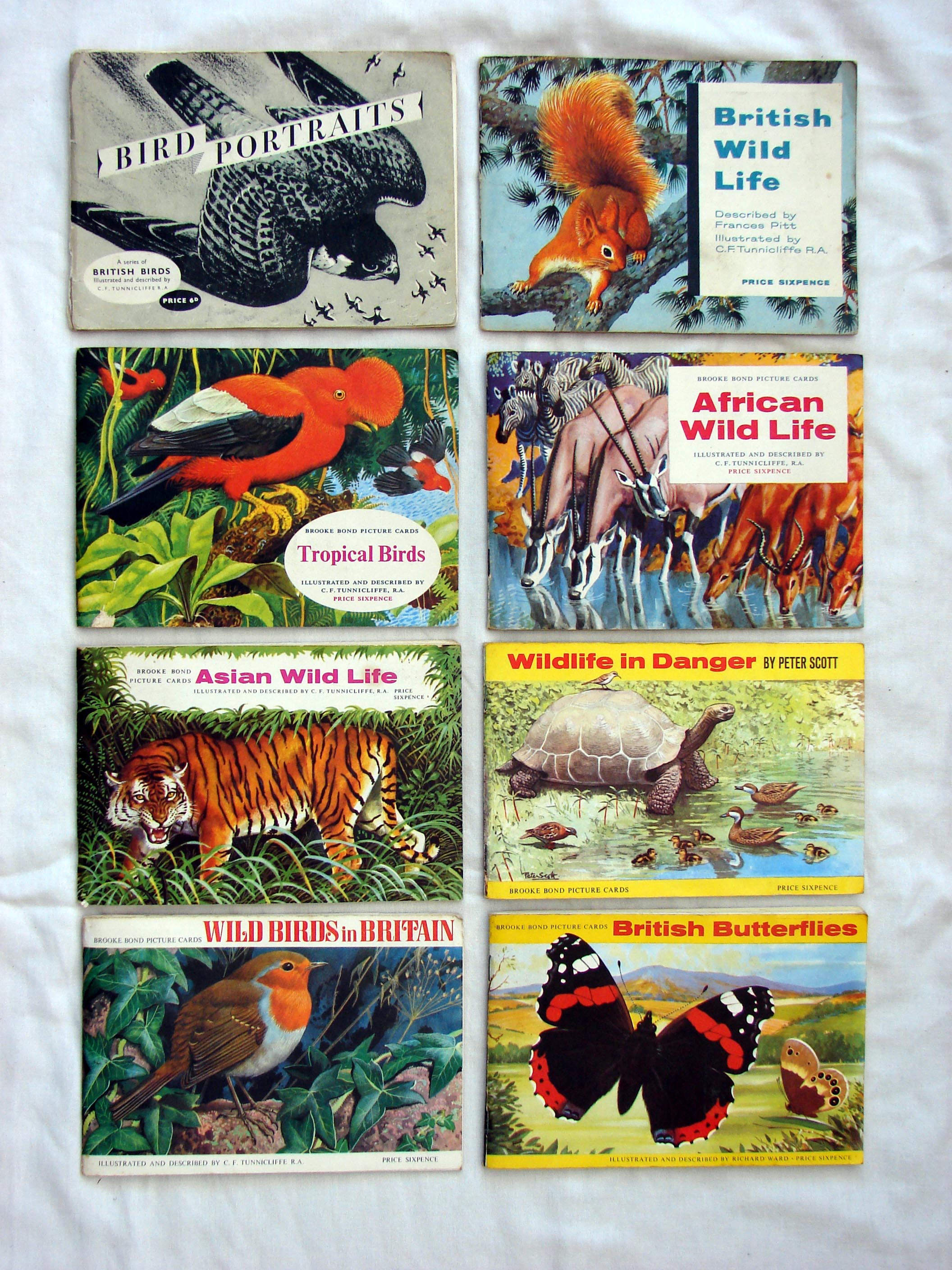
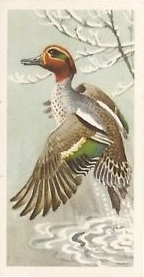

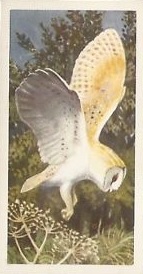
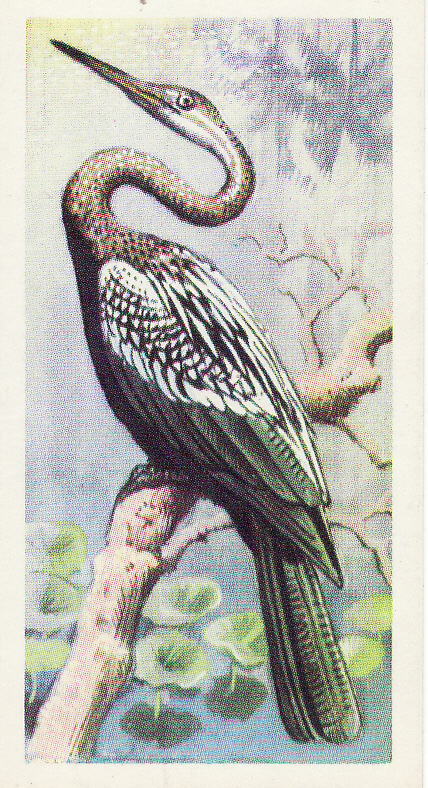
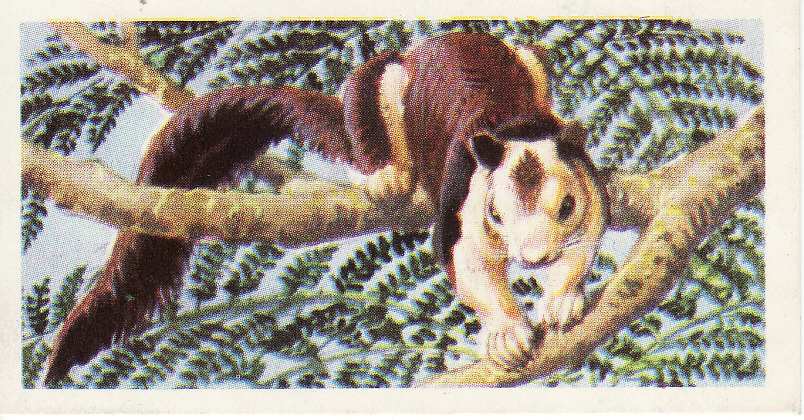
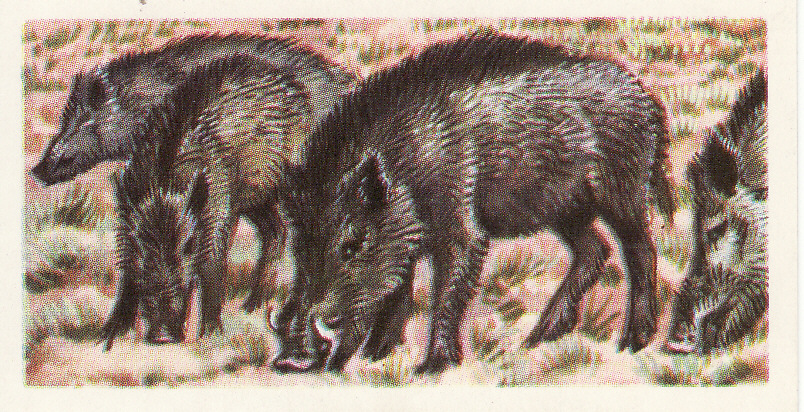



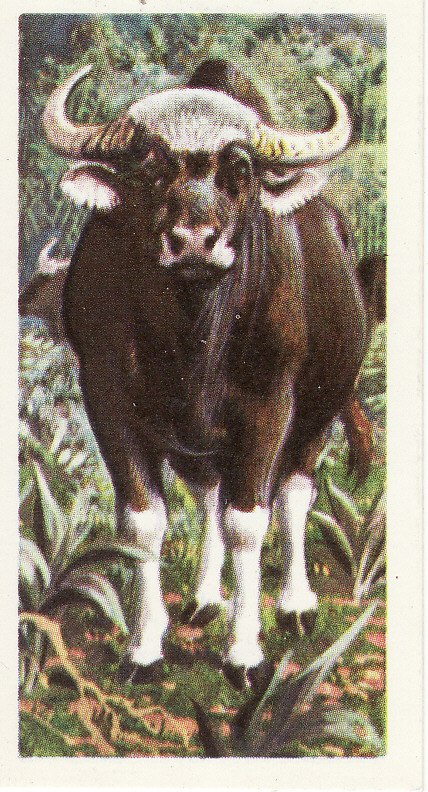






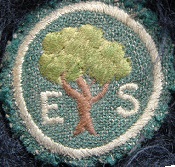 Hello Everybody – Welcome to these Eastwick County Primary School pages. I was a pupil there from 1960 to ’66. This page is available as a home for photos and memories of those years. For example :
Hello Everybody – Welcome to these Eastwick County Primary School pages. I was a pupil there from 1960 to ’66. This page is available as a home for photos and memories of those years. For example :